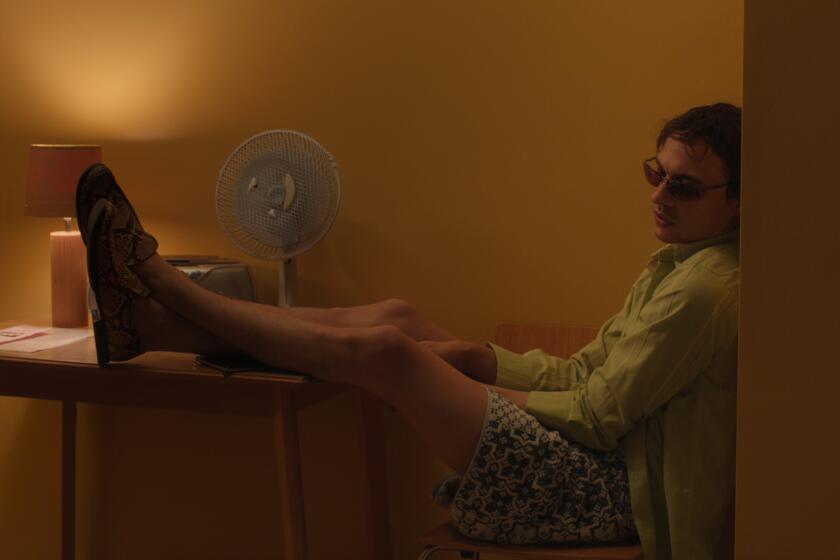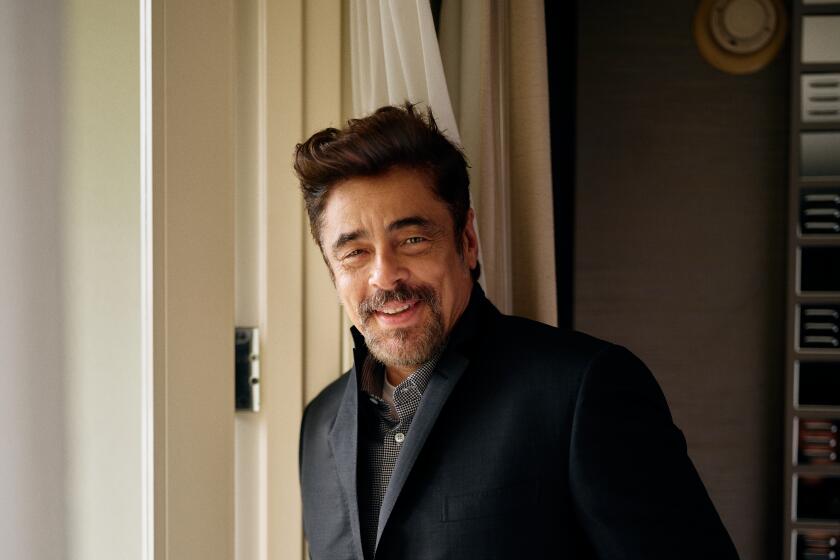Long on Entertainment
- Share via
During the Golden Age of Hollywood, the major studios made short films to fill out the program in movie theaters and test the screen presence of up-and-coming talent.
A teen-age Ginger Rogers, for example, starred in “Office Blues” in 1930, three years before she began dancing cheek-to-cheek with Fred Astaire. Cary Grant made his screen debut in an obscure 1931 musical, “Singapore Sue,” and singer Bessie Smith made her only screen appearance in 1929’s “St. Louis Blues.”
Kino on Video’s “Hollywood Rhythm” ($25 each, $90 for the set), arriving in stores Tuesday, is a fascinating four-volume collection of the best of the musical shorts Paramount Studios produced from 1929 to 1941.
Musical buffs are in for a treat, says Kino art director Bret Wood.
“They will tap their toes and enjoy these musicals which they never knew existed,” he says. “I think it’s going to be a real surprise to realize here are dozens of musicals.”
The collection features such legends-in-the-making as Bing Crosby, Rudy Vallee and Ethel Merman; famed songwriters Hoagy Carmichael, Mack Gordon and Harry Revel, and Richard Rodgers and Lorenz Hart; singers Ruth Etting, Lillian Roth and a teenage Billie Holiday; musicians Artie Shaw, Fats Waller, Duke Ellington and Louis Armstrong, and Broadway great Eddie Cantor.
“One of the things that never fails to startle me is the range of material they put in these early films,” says Richard Barrios, author of “A Song in the Dark: The Birth of the Musical Film.” “You have opera singers on one hand and hillbilly bands on the other and pretty much everything else in between.”
The Paramount shorts were shot in Hollywood and at Astoria Studios in Queens, N.Y. Though every studio made these type of films, Barrio says Paramount’s, which are controlled by the estate of the late film collector Raymond Rohauer, were the most interesting. “They had a more European feel,” he says. Still, very few made the cut.
Some may be surprised by a few that did make the cut, as they portray racial stereotypes; particularly painful to watch is Bing Crosby in black face in 1932’s “Dream House.”
“That was definitely treading the line,” Wood says of including the clip. “I put it in for one reason: I don’t really like Bing Crosby. So this will make people say, ‘He’s not such a great guy after all.’
“At the same time, you have got these white jazz musicians copying black jazz. There is one called ‘Those Blues,’ where a white band plays ‘St. Louis Blues’ and then you have Bessie Smith doing ‘St. Louis Blues.’ It’s a world of difference between them. I like to bring out these contrasts in the style of the white and black performers and make you realize that there are some racial politics going on.”
Barrios, who was a consultant on the collection, says, “I’m glad that they are allowing these things to be shown. You can’t bury the past. Years ago, they tried to buy up all the copies of ‘St. Louis Blues’ because of stereotypes. This would have robbed us of something priceless. This is all we have of Smith [on film]. You can’t act like these things didn’t happen. You can jeer that people thought this way.”
The shorts also reflect the rapid improvements that were being made in sound films. The oldest film in the collection, Ruth Etting’s “Favorite Melodies,” was shot in late 1928. It features a rather stiff Etting singing in front of a stationary camera. Less than a year later, Paramount produced the ambitious, avant-garde Duke Ellington short “Black and Tan Fantasy.”
“You can tell a film that was shot in early 1929 from one that was shot three months later,” Barrios says. “It looks better. The Duke Ellington short was shot by the same director as ‘St. Louis Blues,’ which is a bit clunky.”
So are some of the performers, including Grant, who is almost unrecognizable as a roughhewn sailor in “Singapore Sue.”
“He’s unformed there,” Barrios says. “He’s not even Cary Grant yet. Literally, he’s still Archie Leach. His neck and chin are a lot different.”
Crosby’s energetic persona in the three Mack Sennett shorts in the collection is a marked contrast to the laconic star he would become in a few years.
“After he did the Sennett shorts and went into features, he really stopped trying to be anything else and kind of assumed this ultra-relaxed personality,” Barrios says. “I think it’s sort of a tragedy in a way with him. He found what he felt was his niche and he wasn’t able to give more of himself.”
Hollywood continued making the shorts until the 1950s, when they fell victim to television. “They were considered disposable,” Barrios says. “It was something to pad out a program, along with the newsreel and coming attraction trailers. Then in the early 1950s, Paramount sold all of their shorts to [TV] and they would run on TV as a filler after movies.”
Because these shorts were considered disposable, they weren’t in the best shape. “The best one of the bunch quality-wise was Cab Calloway’s ‘Hi-De-Ho,’ ” Wood says. “We actually worked from an original nitrate camera negative.
“At the other end of the scale, we had a beat-up print, which had run who knows how many times, of ‘Artie Shaw’s Class in Swing.’ We were moving along fine with that one until we realized someone had cut out chunks of the picture and left the sound as it was. So we laid down the sound and the best parts of the picture and then we had to go to a 16mm print and pick out the missing pieces.”
*
“Hollywood Rhythm” can be ordered at (800) 562-3330.
More to Read
Only good movies
Get the Indie Focus newsletter, Mark Olsen's weekly guide to the world of cinema.
You may occasionally receive promotional content from the Los Angeles Times.








